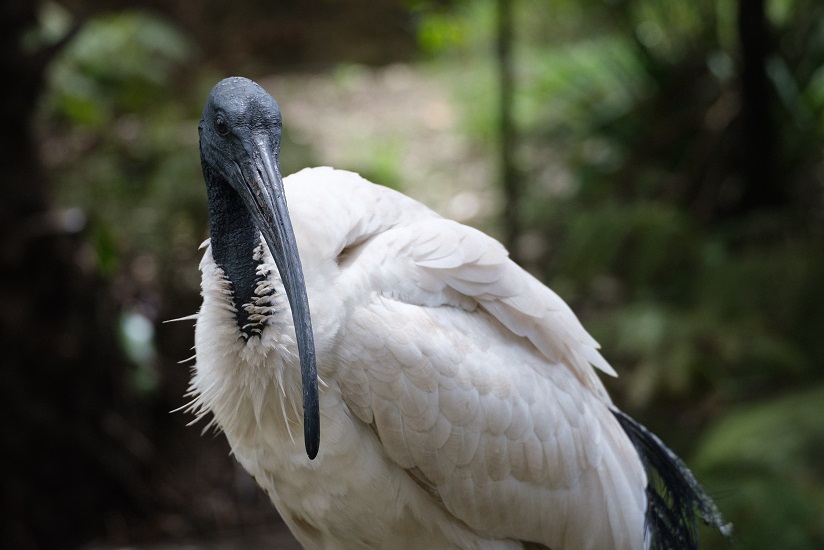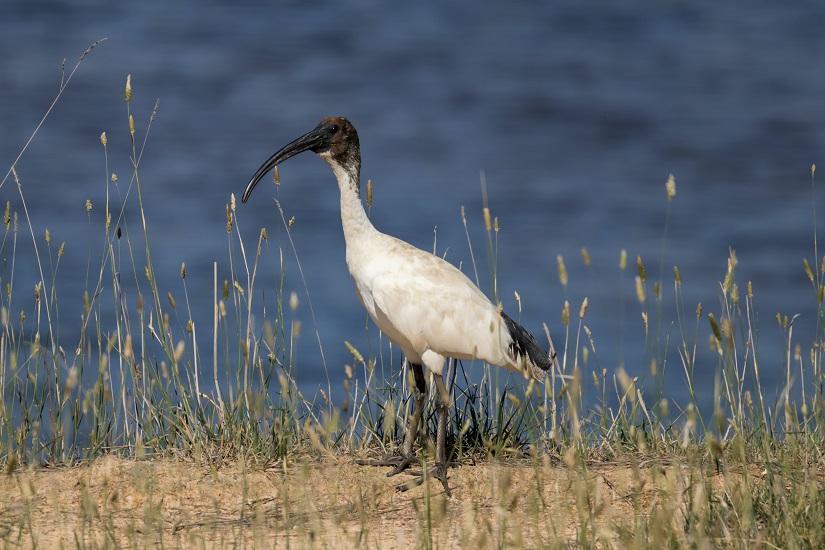

The Australian White Ibis (Threskiornithidae: Threskiornis moluccus) is a large, distinctive white-wading bird. One of three native Ibis species, it is easily recognised by its large white body, long neck, black head, and downward curving black bill. This amazing long decurved bill helps the bird to sense invertebrates in terrestrial and marshy environments. It is also very useful for picking through garbage, earning it the nicknames ‘bin chicken’ and ‘tip turkey’.
Historically, their natural breeding and foraging grounds are wet and marshy areas or grasslands across eastern, northern, and south-western Australia. However, long periods of drought along with changes to water management regimes in their inland habitat have forced flocks of these birds into urban areas.
Australian White Ibis are now a common species in parks, waste processing centres, and ovals across Sydney. In fact, you can find these striking white birds in many parts of urban and suburban Australia.
While not everyone may be fond of these large and stately birds, the fact that they are steadily leaving their native breeding grounds and infiltrating urban areas is a warning sign that something is out of kilter with our environment.
As droughts and changes to river management continue to affect our inland wetlands, ibis are becoming reliant upon urban food sources provided by humans. Open rubbish bins, waste centres, open grassy ovals, and garbage strewn across parks all provide ample food for these birds. This can cause problems such as:
- Nesting colonies can be very noisy and messy.
- Large numbers of ibis can cause damage to plants in roosting, breeding, and feeding areas.
- Ibis can cause a significant mess when they dig through garbage bins.
- Some Ibis will readily steal food from picnickers. Although not dangerous or aggressive, they can be intimidating due to their large size and long beak.
- Faecal drops under roost trees and in feeding areas can be smelly and very messy.
Ibis thrives on access to food scraps and their faecal drop may have a health impact if ingested. By following these recommendations, you can help prevent overpopulation in your area:
- If using a public park or open space, always put your rubbish in the bin or take it home and dispose of it appropriately.
- Don’t feed or encourage birds.
- Consider removing exotic plant species from your garden that provide nesting sites, particularly Cocos Palms.
- Practice good hygiene and always wash hands after contact with animal droppings.
Yes, Ibis are a protected species in NSW under Biodiversity Conservation Act 2016 and it is against the law to harm them or collect their eggs.
Share this information or the Council’s Australian White Ibis Fact Sheet with your neighbours.
Also, the Australian Museum, Royal Botanic Gardens, Sydney University and Domain Trust are currently conducting a long-term project to understand Australian White Ibis populations. If you see an ibis with a numbered plastic tag on its wing or metal / coloured plastic bands around its legs, report it to the Big City Birds Project. By reporting the bird, you will be providing valuable data about Ibis populations and behaviour.
You can send your report via email to ibis.sightings@gmail.com or download the Big City Birds (available for both Androids and iPhones).